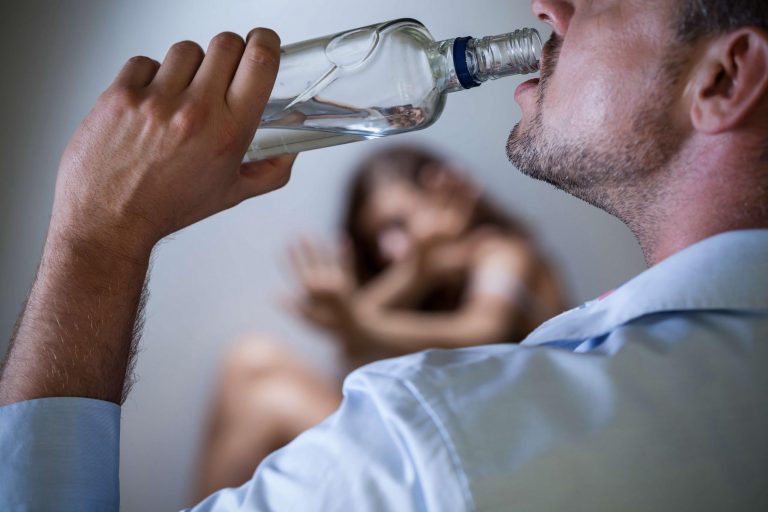This CME/CE credit opportunity is jointly provided by the Postgraduate Institute for Medicine and NIAAA. Active participation in a mutual support group can benefit many people as well.28 Groups vary widely in beliefs and demographics, so advise patients who are interested in joining a group to try different options to find a good fit. The challenge of this stage is to essentially develop and Sober House maintain healthy life skills that will serve you for a lifetime. An exciting part of this period is that it can lead you to a happier life full of welcomed change and constant improvement. While the abstinence stage of withdrawal causes mostly physical symptoms, post-acute withdrawal is very psychological and emotional. People who are interested in alcohol addiction recovery should call us.
Component 1: Definition of Remission From DSM-5 AUD

You might not recognize how much you drink or how many problems in your life are related to alcohol use. Listen to relatives, friends or co-workers when they ask you to examine your drinking habits or to seek help. Consider talking with someone who has had a problem with drinking but has stopped. 2 in 3 adults who ever had a mental health problem considered themselves to be recovering or in recovery.

What health complications are associated with alcoholism?
More resources for a variety of healthcare professionals can be found in the Additional Links for Patient Care. Some people may feel so “broken” that they almost feel they can no longer experience joy and confidence, or have healthy relationships again. The mental challenge of this stage is not to let anything make you feel defeated. Since withdrawal symptoms https://thewashingtondigest.com/top-5-advantages-of-staying-in-a-sober-living-house/ tend to ebb and flow, you may be tempted to feel like you’re not making progress ― even though in reality, you’ve come a long way. Homicide rates are tumbling from pandemic highs in most cities, funding for law enforcement is rising, and tensions between the police and communities of color, while still significant, are no longer at a boiling point.

There is a new research definition of recovery from alcohol use disorder.
Essentially, healing is a dynamic and complex process incorporating all the advantages to mental, physical, and social health that can happen when someone who is addicted to alcohol gets the help they need. In addition to age, rates of recovery or remission of AUD symptoms vary by gender and race/ethnicity. In the Fan et al.7 replication of Dawson et al.5 using NESARC-III data, female gender predicted both abstinence and low-risk drinking. Alcohol treatment and recovery is a lifelong process that requires commitment and changes in many aspects of a person’s life. These four stages of treatment can help people with alcohol use disorders learn about the benefits of recovery, find the motivation to change their behavior, and learn new skills that will help them succeed in the long term. Regardless of the type of support system, it’s helpful to get involved in at least one when getting sober.
- Get the latest announcements on SAMHSA’s effort to address recovery support.
- The Initiation stage is comprised of two sub-stages, the above-described questioning stage and the stage of early abstinence.
- Challenges at this stage of treatment include cravings, social pressure to drink, and high-risk situations that can trigger alcohol consumption.
- This can also help you reconnect and make it easier for them to offer empathy and support when your feelings and emotions trigger thoughts of drinking.
- According to the National Institute on Alcohol Abuse and Alcoholism (NIAAA), recovery is a process that involves remission from AUD and quitting heavy drinking for good.
Think about things that led to or worsened this relapse and how to remove them from your life. If a trigger is unavoidable, consider what you can do differently next time you face it. If you’ve been in a program, immediately connect with your counselor, therapist, support group, or mentor. Recommit to your self-care plan, especially activities that eased stress and other emotional triggers.
- In these programs, it’s customary to receive plastic chips as you progress to the one-year mark, at which time you receive a bronze coin.
- Low rates of service utilization have persisted despite improvements in AUD treatment and lower threshold options28 and the expansion of access and coverage of services for SUD provided by the Affordable Care Act.
- At any rate, the outcome is the same – people can refrain from drinking, become healthier, become better parents, partners, neighbors, and citizens, and overall productive members of society.
- In most cases, though, getting sober is a lot more complex than simply giving up alcohol.
- The differences are clear to those who have experienced both phases in their healing process from alcoholism.
- Heavy alcohol use is the most identifying feature of alcohol use disorder.
Behavioral symptoms
- If underlying issues are left unresolved, however, one faces a higher risk of forms of compulsive behavior other than compulsive drinking, such as gambling, excessive sport, excessive sexual activity, or compulsive eating.
- Financial troubles and problems finding and keeping employment are major triggers for relapse, but it is possible to take baby steps and get your finances in order.
- As an addiction tends to get worse over time, it’s important to look for early warning signs.